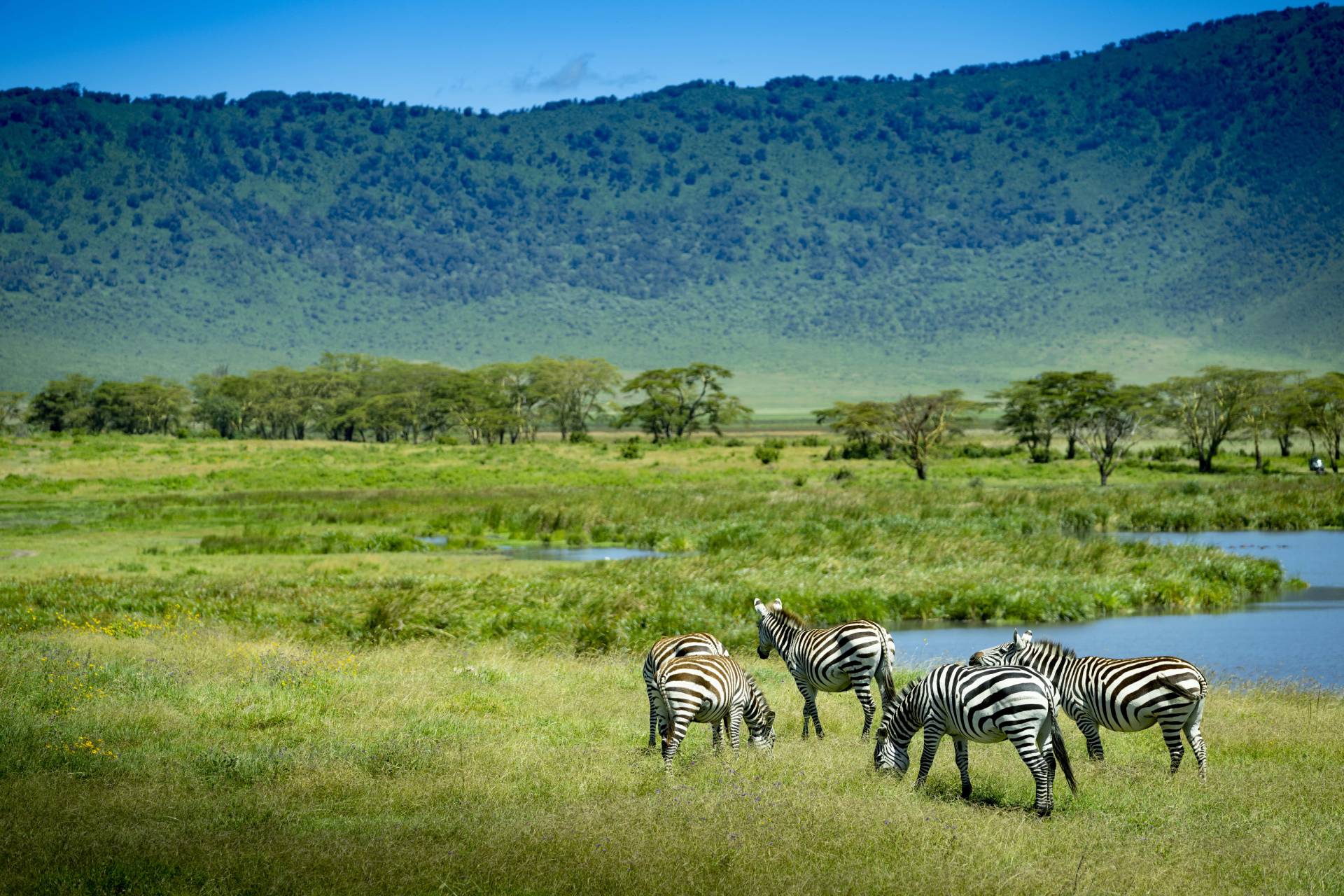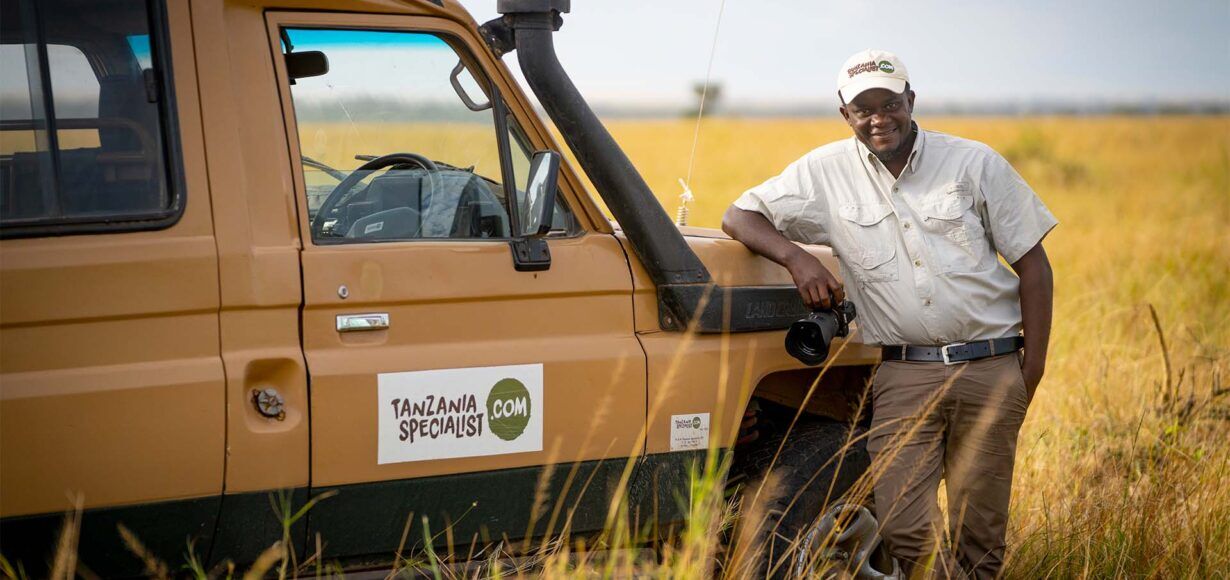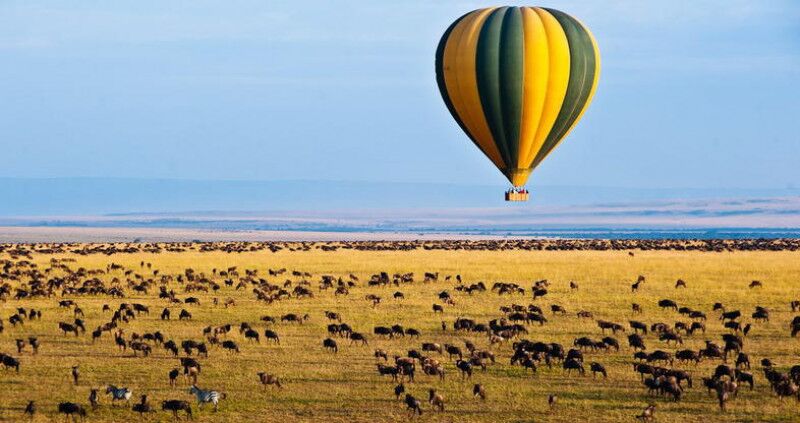The Ngorongoro Conservation Area spans from Serengeti National Park in the north, to the Great Rift Valley in the east. In total, the conservation area covers more than 8,000 km² (3,200 sq. miles). It consists of the Ngorongoro Crater, Ndutu, Olduvai Gorge, Empakaai, Olmoti Crater and Oldonyo Lengai Mountain. The mix of forests, valleys, savannah, craters, lakes and swamps is home for a wide range of animals.
Natural wonder Ngorongoro Crater
The famous Ngorongoro Crater is the main feature of this area. Two to three million years ago the large volcano exploded and collapsed on itself. As a result the crater formed which then created a unique ecosystem with a wide variety of vegetation.
Today the crater is home to the highest concentration of wildlife in Africa. It is home to zebras, buffaloes, warthogs, baboons, elephants, flamingos, ostriches and hippos. You can find a high population of predators, including lions, hyenas, jackals, cheetahs and leopards. And a big attraction of the Ngorongoro Crater are of course the Big Five – buffalo, elephant, leopard, lion, rhino. You can see them all in this 20 kilometres (12,5 miles) wide and 600 metres (2,000 feet) deep crater. Enjoy the variety of animals and beautiful colours of the landscapes. The views from the crater rim over the crater floor are incredible. Because of its natural beauty, the crater is chosen as one of Africa’s Seven Natural Wonders.
Maasai tribe
During your safari it is also possible to visit the Maasai tribe. They are allowed to let their livestock graze in this area. If you really want to learn more about the lifestyle and rituals of this fascinating tribe, we recommend you to book a Maasai Tour.
You like to incorporate Ngorongoro Crater into your itinerary? Check our Tanzania safaris for inspiration or contact us for a personal advice.
Excursions and activities in Ngorongoro Conservation Area
- Mountainbike tour Lake Manyara
- Visit Maasai village
- Visit Hadzabe tribe
- Cultural tour Mto wa Mbu
Travel time to Ngorongoro Conservation Area
- Arusha to Ngorongoro Conservation Area: 3 hours
- Ngorongoro Conservation Area to Serengeti National Park: 2 hours’ drive.
- Ngorongoro Conservation Area to Lake Manyara: 1 hour drive.
- Ngorongoro to Tarangire: 2 hours’ drive
Travel tips from our experts about Ngorongoro Conservation Area
My name is Arthur and I am a guide at the Ngorongoro Conservation Area for 16 years.
The Ngorongoro Crater is one of the main reasons many people visit Tanzania. It is a spectacular experience and I recommend everyone to spend at least 1 day at the crater floor.
How long to stay? 1 day at the crater floor and an extra day if you want to explore the area around the crater.
Which hotel? Ngorongoro Sopa lodge, because of the beautiful views, friendly staff and beautiful rooms.
Want to see more? This video is worth a thousand words
Information and facts
Ngorongoro Crater is the main attraction of this area. It is home to the highest concentration wildlife in Africa. You can see lions, elephants, zebras, black rhino and so much more. The views from the crater rim over the crater floor are spectacular. No wonder it is chose as one of Africa’s Seven Natural Wonders.
Most common animals
- Rhinos
- Hippos
- Lions
- Grant Gazelles
- Thomson Gazelles
- Zebras
- Wildebeests
- Warthogs
- Highland Antelopes
- Elephants
- Jackals
- Ostriches
Facts about Ngorongoro
- Ngorongoro crater floor with its unique habitat and wildlife
- Ngorongoro Highlands
- Olmoti Crater and Empakaai Crater
- Tropical rainforest
- Olduvai Gorge, earliest place of human existence on earth
- Museum Laetoli Footprint, has oldest known footprints of early humans.









